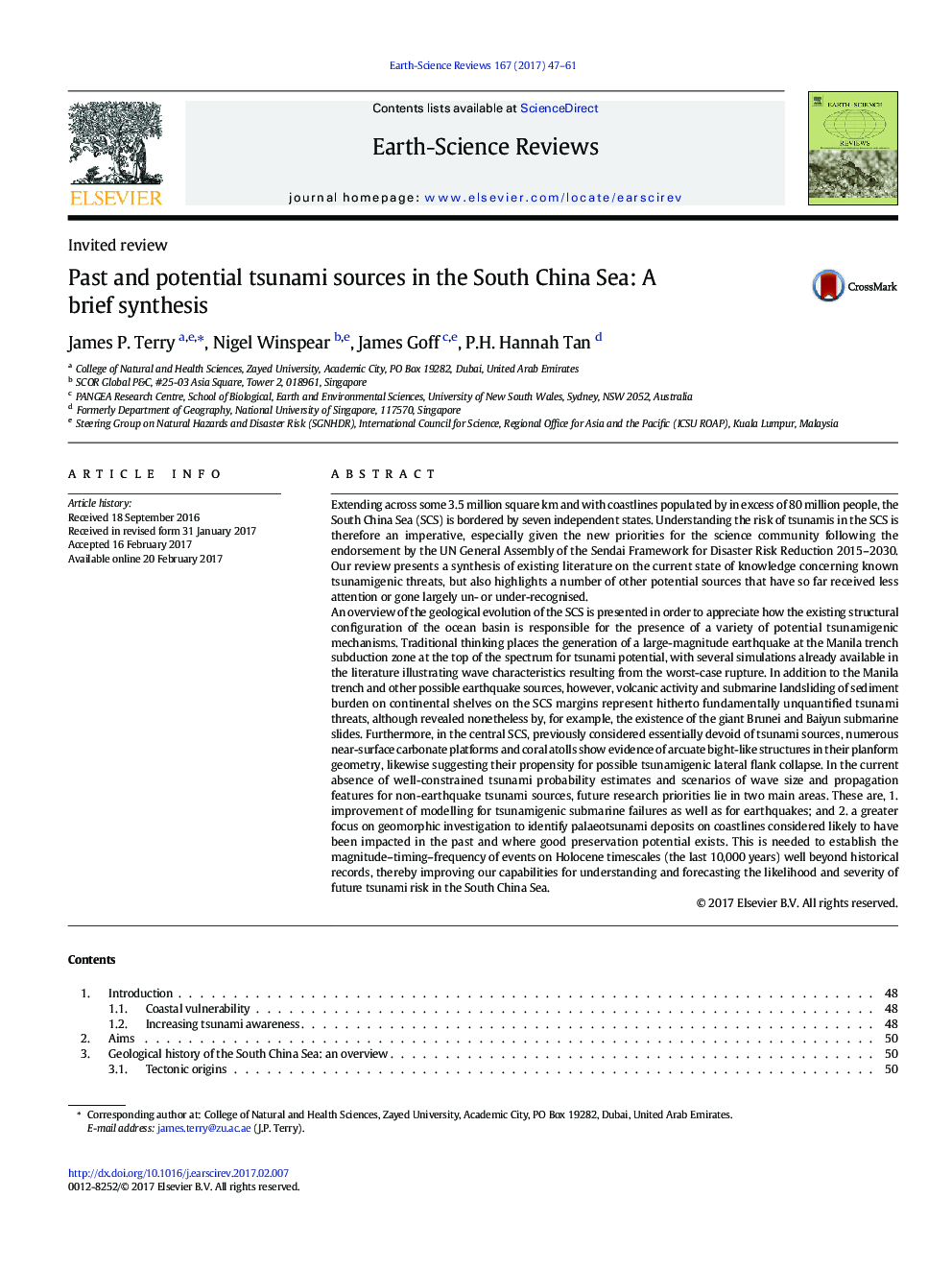| Article ID | Journal | Published Year | Pages | File Type |
|---|---|---|---|---|
| 5785173 | Earth-Science Reviews | 2017 | 15 Pages |
Abstract
An overview of the geological evolution of the SCS is presented in order to appreciate how the existing structural configuration of the ocean basin is responsible for the presence of a variety of potential tsunamigenic mechanisms. Traditional thinking places the generation of a large-magnitude earthquake at the Manila trench subduction zone at the top of the spectrum for tsunami potential, with several simulations already available in the literature illustrating wave characteristics resulting from the worst-case rupture. In addition to the Manila trench and other possible earthquake sources, however, volcanic activity and submarine landsliding of sediment burden on continental shelves on the SCS margins represent hitherto fundamentally unquantified tsunami threats, although revealed nonetheless by, for example, the existence of the giant Brunei and Baiyun submarine slides. Furthermore, in the central SCS, previously considered essentially devoid of tsunami sources, numerous near-surface carbonate platforms and coral atolls show evidence of arcuate bight-like structures in their planform geometry, likewise suggesting their propensity for possible tsunamigenic lateral flank collapse. In the current absence of well-constrained tsunami probability estimates and scenarios of wave size and propagation features for non-earthquake tsunami sources, future research priorities lie in two main areas. These are, 1. improvement of modelling for tsunamigenic submarine failures as well as for earthquakes; and 2. a greater focus on geomorphic investigation to identify palaeotsunami deposits on coastlines considered likely to have been impacted in the past and where good preservation potential exists. This is needed to establish the magnitude-timing-frequency of events on Holocene timescales (the last 10,000Â years) well beyond historical records, thereby improving our capabilities for understanding and forecasting the likelihood and severity of future tsunami risk in the South China Sea.
Related Topics
Physical Sciences and Engineering
Earth and Planetary Sciences
Geology
Authors
James P. Terry, Nigel Winspear, James Goff, P.H. Hannah Tan,
